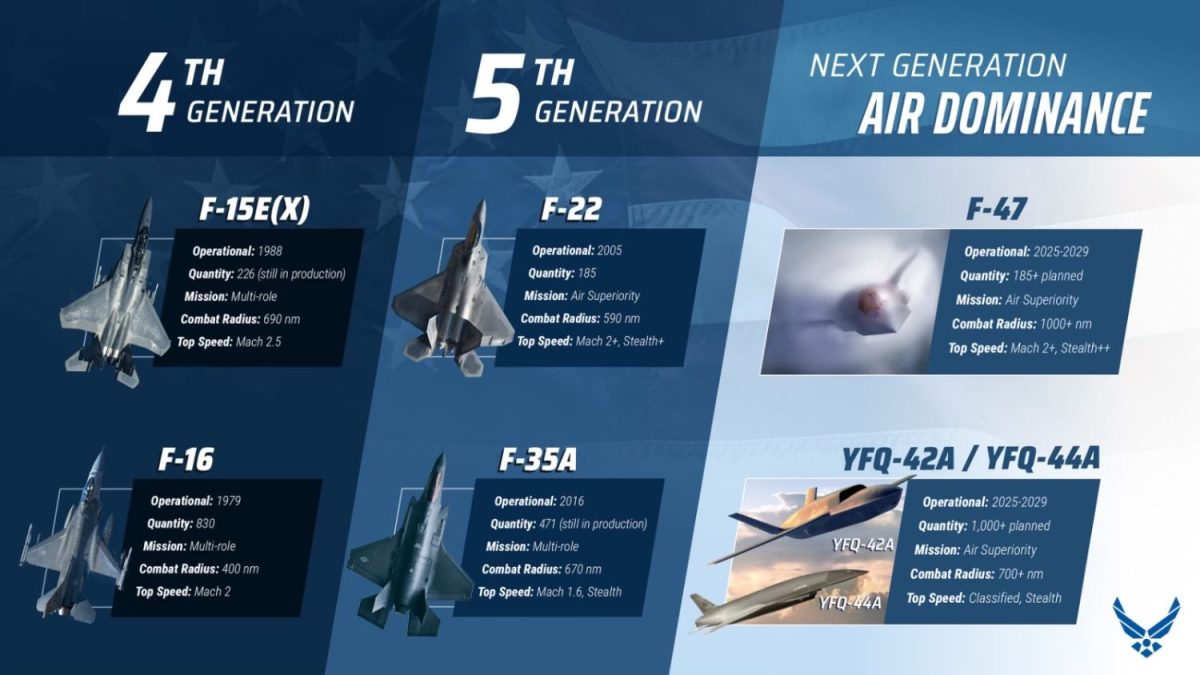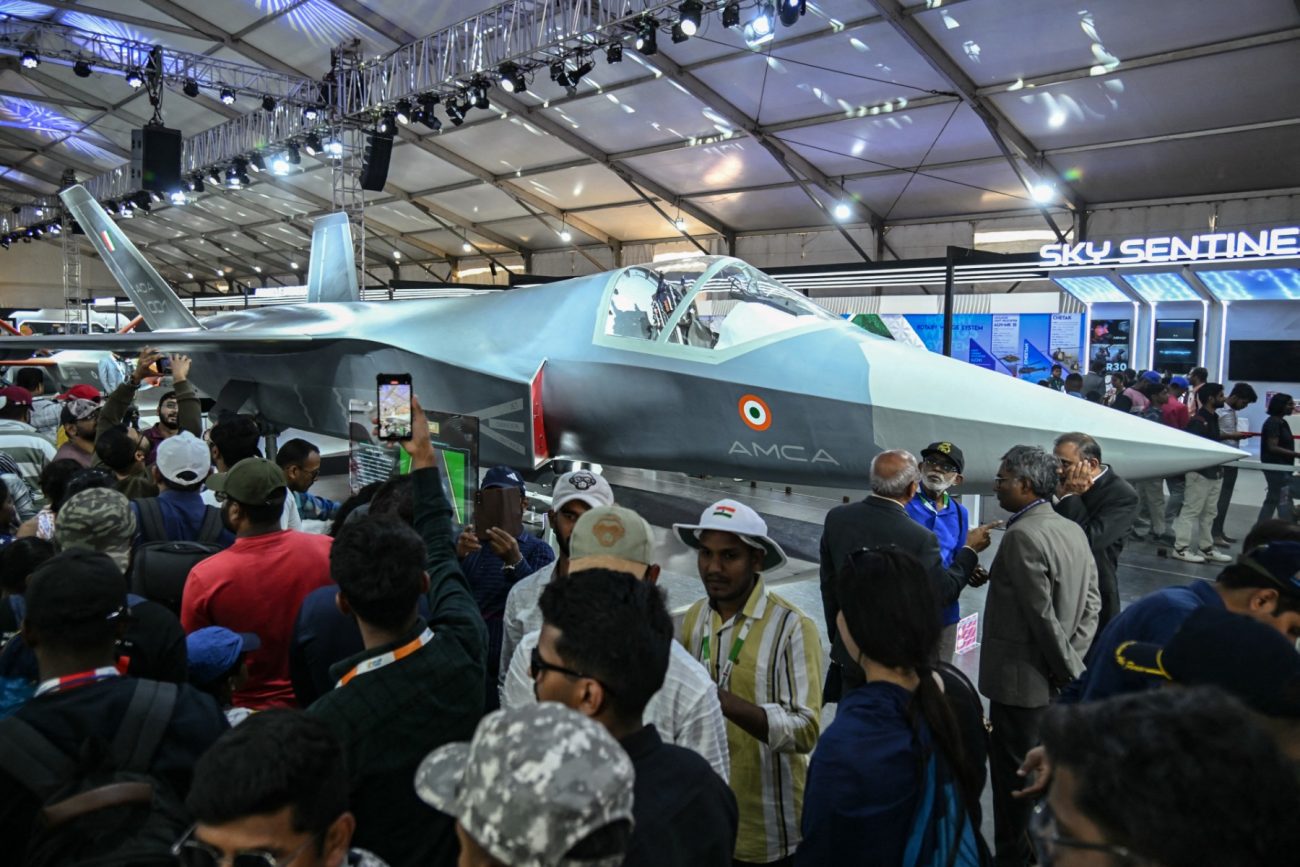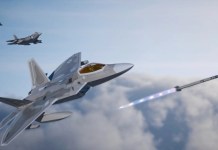The Next-Generation Adaptive Propulsion (NGAP) program is a U.S. Air Force (USAF) initiative to develop advanced, adaptable jet engines with features like enhanced fuel efficiency, increased thrust, improved thermal management, and better survivability for future combat aircraft, such as the Next Generation Air Dominance (NGAD) fighter, now also known as the F-47.
Pratt & Whitney and General Electric are competing to produce these state-of-the-art engines, with XA103 and XA102 prototypes, respectively, leveraging technologies from the earlier Adaptive Engine Transition Program (AETP).
The program aims to provide a propulsion system that can dynamically change its characteristics in flight to suit mission needs, rather than being fixed for a single operational point.
The adaptive architecture allows components to adjust for optimized fuel efficiency or high-thrust modes.
A “third stream” of cooled air is introduced to improve thermal management and propulsion. Advanced features ensure performance and survivability in challenging environments.
There will be a significant improvement in fuel consumption efficiency compared to previous generations. The technology aims to provide the range, weapon capabilities, and persistence required for future air dominance platforms.
Both companies are in the detailed design and analysis phase, having completed key design reviews, and are now fabricating and testing prototype ground demonstrators.
Testing is expected to continue through the late 2020s. Although originally intended to power the manned NGAD fighter jet, the program’s scope is adaptable to other future military aviation needs.
The USAF has increased funding for the program to support continued design, testing, and prototype development.
Adaptive Cycle Engine Technology
The Next Generation Adaptive Propulsion (NGAP) program is a USAF initiative aimed at developing advanced adaptive cycle jet engines for next-generation combat aircraft.
These engines are designed to provide a revolutionary leap in performance by dynamically adjusting their airflow to optimize for either maximum thrust or maximum fuel efficiency.
Unlike fixed-cycle engines, which are optimized for a single performance point, adaptive engines feature a third stream of airflow that can be used to achieve different modes of operation.
In the high-thrust mode, the third air stream is closed off, and all airflow is directed through the core of the engine, similar to a traditional fighter jet engine.
This provides maximum power for take-off, acceleration, and combat. In the high-efficiency mode, for long-range cruising, the engine opens the third stream of cooled air. This improves fuel efficiency by increasing the engine’s bypass ratio.
This flexibility allows a single engine to provide the power required for high-speed combat as well as the fuel efficiency needed for long-endurance (or range) missions, offering a significant advantage over previous-generation engines.
The NGAP program aims to deliver several key advancements beyond increased thrust and fuel efficiency.
Thermal management is critical for next-generation aircraft that produce enormous amounts of heat withstood by advanced metals and materials.
The program relies heavily on digital processes, utilizing advanced design models to accelerate development, enhance collaboration with suppliers, and improve manufacturing efficiency.
NGAP technologies are being developed with advanced survivability in mind, incorporating features to improve the aircraft’s stealth capabilities and resilience in contested airspace.
The engine is being designed with a flexible, modular architecture that can be adapted for various future combat aircraft, not just a single airframe.
Adaptive Versatile Engine Technology (ADVENT)
The ADVENT program is one of several related development projects being pursued under the Air Force’s Versatile Affordable Advanced Turbine Engine (VAATE) program.
After being announced in April 2007, Rolls-Royce (RR) and GE Aviation were awarded Phase I contracts in August 2007 to explore concepts, develop and test critical components, and begin preliminary designs of an engine.
In October 2009, RR was awarded the Phase II contract to continue component testing and integrate the developed technologies into a technology demonstrator engine.
GE Aviation was also awarded funds to continue developing its technology demonstration core, which was unexpected, as the ADVENT program had originally called for a single contractor to be selected for Phase II.
The ADVENT program was an aircraft engine development initiative run by the USAF to develop an efficient adaptive cycle, or variable cycle engine, for next-generation military aircraft; initial demonstrators were expected to produce thrust in the 20,000 lbf (89 kN) class.
In 2012, the program was succeeded by the Adaptive Engine Technology Demonstrator (AETD) program. Work continued in 2016 under the Adaptive Engine Transition Program (AETP), which focused on developing and testing a 45,000 lbf (200 kN) thrust-class adaptive cycle engine for potential F-35 re-engining.
The NGAP was launched for a related 35,000–40,000 lbf (156–178 kN) thrust class engine to power the NGAD crewed fighter aircraft.
The specific goals included reducing average fuel consumption by 25% and lowering the temperature of the cooling air produced by the engine.
Pratt & Whitney has funded an adaptive fan variant of its F135 that may qualify for the follow-on Adaptive Engine Technology Development (AETD) program under the USAF Research Laboratory program.
The ADVENT engine was originally targeted for the USAF’s 2018 Next-Generation Bomber, but uncertainty in that program led Rolls-Royce (RR), one of the primary developers involved with the project, to predict that the ADVENT engine would be better suited for a potential 2020 engine upgrade for the F-35 Lightning II.
RR, who is partnered with GE Aviation on the embattled F136 alternate engine for the F-35, has suggested that the ADVENT development contracts are all the more reason to continue the F136, as any engine upgrade from Pratt & Whitney (makers of the F135 engine currently used in the F-35) would have to be separately funded, either internally or to additional government cost.
It would also apply to future sixth-generation fighter programs, such as Penetrating Counter Air (PCA) or Next Generation Air Dominance (NGAD) for the USAF, and F/A-XX for the US Navy.

Delays In The US Next-Gen Engines
The USAF anticipates a two-year delay for next-generation prototype engines, which are intended to power the Air Force’s forthcoming Boeing F-47 stealth fighter.
It will not be completed before fiscal 2030. The FY25 budget documents had shown that the engines were to be wrapped up in the fourth quarter of FY27.
However, in FY26 documents released by the Trump administration in June, that timeline has shifted by over two years to the second quarter of FY30. The updated schedule in the budget documents reflects supply chain challenges encountered by the program.
The next milestone will be the completion of an Assembly Readiness Review, which is expected to finalize the timeline for the engine prototype’s build and testing phases over the coming few years. Production of parts for the prototype engine began earlier this year, as announced in July 2025.
In a statement, a spokesperson for GE Aerospace said that the company “is executing the NGAP contract schedule as proposed.” GE has also expressed confidence that the program could be accelerated.
A spokesperson for Pratt similarly said, “While the USAF is best positioned to discuss the overall schedule, we can confirm that Pratt & Whitney is successfully executing the NGAP program, fulfilling our commitments in alignment with their plan.
Pratt & Whitney is closely collaborating with our supply chain to enhance delivery by implementing advanced digital design models that will streamline manufacturing and inspection processes.”
Meanwhile, following a new round of NGAP contracts issued by the USAF, the total award ceiling for each vendor was raised to $3.5 billion.
The USAF is expected to select one NGAP contender to carry forward in the end. Considering the aggressive timeline the Pentagon is pushing to fly the F-47 before the end of President Donald Trump’s term, a next-gen engine is likely out of reach for the fighter in the near future.
Operational Implications
The capabilities adaptive cycle engines offer could be particularly important in a future large-scale conflict, especially one against China across the broad expanses of the Pacific, where aerial refuelling assets are expected to be increasingly at risk and available bases could be few and far between.
The engines will be much more efficient than the existing F135. They will give a greater range for the same fuel. Derivatives of the engines will power uncrewed platforms part of the Collaborative Combat Aircraft (CCA) concept. Some of the technologies could be “portable” between the programs.
The key to enabling future air dominance capabilities, such as the required range, weapon, and sensor capability, and persistence that platforms will require to meet evolving operational needs.
The adaptive engine of the future will continue to advance digital and agile design and development capabilities, while enhancing the warfighter’s propulsion capabilities.
The high-efficiency mode may be crucial to how the USAF hopes to achieve a maximum combat radius on the F-47 that is almost double that of an F-22.
Performance statistics suggest the F-47 is expected to deliver a 1000-plus nautical mile combat radius, compared to the F-22’s 590 nautical miles.
The F-47 is expected to surpass the F-22’s stealthiness in terms of radar signature, but the heat produced by high-performance jet engines is still a vulnerable target for infrared search and tracking (IRST) sensors and infrared guided missiles, which are widely used in modern aircraft.
The engine must provide for the aircraft’s planned Mach 2-plus top speed. The F-47’s engines will need to be able to deliver an adequate amount of electrical supply to power a wide array of advanced electronics.
In the future, this would need to accommodate directed energy weapons, and a sufficient power overhead must be allocated to support the development of future aircraft sensors and electronic warfare (EW) capabilities.
India’s Indigenous Engine Must Be Adaptive
The engine design is one area where the West, and particularly the United States, still maintains a clear lead over Russia and China.
China’s J-20 stealth fighter began receiving the domestically produced WS-15 engines in 2023, replacing the reverse-engineered WS-10 engines, which were largely based on those used in Chinese Su-27 derivatives, such as the J-11.

China has begun working on adaptive cycle engines, but is still a distance away.
India’s indigenous 120 kilonewton (kN) turbofan engine, proposed to be developed by the DRDO in collaboration with French Safran, has similar timelines.
It must use futuristic adaptive cycle engine technology. These will be digitally controlled and expected to be able to adjust in flight, providing either more power or operating in a more fuel-efficient manner, according to the situation. These should one day power the Advanced Medium Combat Aircraft (AMCA).
This project marks a significant step towards strategic autonomy in air power, as Safran will ultimately transfer 100 percent of the technology to DRDO, including crystal blade technology with all intellectual property rights (IPR), thereby enabling domestic design and production —a departure from previous collaborations.
The collaboration will involve the design, testing, and production of these high-thrust engines in India to achieve indigenous fighter propulsion by 2035.
The project will span approximately 12 years, with the development of nine prototypes, starting with 120 kN engines and potentially scaling to 140 kN.
The initiative will fulfill Prime Minister Narendra Modi’s call for self-reliance in defence, particularly in the crucial area of fighter jet engines, and increase India’s strategic autonomy.
The partnership focuses on building India’s long-term capability in engine design and manufacturing, which could potentially enable future engine exports and increase the global market value of Indian-made aircraft.
Time to push the program is now!
- Air Marshal Anil Chopra (Retired) is an Indian Air Force veteran, fighter test pilot, and ex-director-general of the Center for Air Power Studies in New Delhi. He has been decorated with gallantry and distinguished service medals while serving in the IAF for 40 years.
- He tweets @Chopsyturvey
- Follow EurAsian Times on Google News




